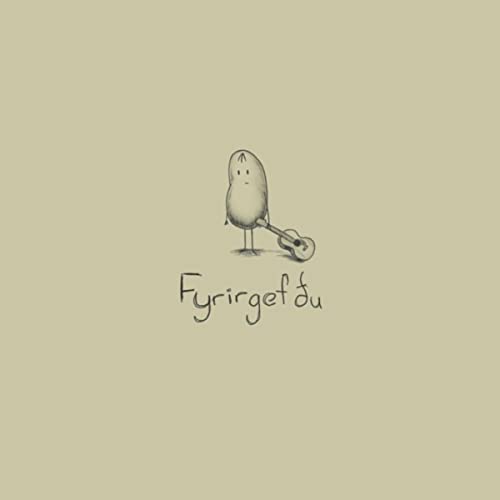Whether it is admitting wrongdoings, comforting a friend or offering your condolences, sorry is perhaps the most used word in our daily parlance. No matter which part of the world you go to, knowing how to say ‘I’m sorry’ is probably the one phrase that’ll come in handy. Want to know – how to say sorry in different languages? Different cultures have distinct ways of handling apologies. So let us learn the culturally correct expression of apologies, so that you may seem friendly, affable and polite when visiting a foreign land.
This Blog Includes:
- Afrikaans – Jammer
- Portuguese – Desculpa
- Arabic – آسف (Aasif)
- Chinese – 对不起 (Duì bù qǐ)
- Danish – undskyld
- Japanese – すみません (Sumimasen)
- Finnish – Anteekski
- French – Masculine : Désolé, Féminine : Désolée
- German – Es tut mir Leid
- Icelandic – Fyrirgefðu
- Spanish – lo siento
- Russian – извини (Izveni); извините (Izvinite)
- Norwegian – Beglagar
- Korean – 미안합니다 (Mianhamnida); 죄송합니다 (Joesonghamnida)
- Italian – Mi Dispiace
- Greek – συγνώμη (Signómi)

Afrikaans – Jammer
Afrikaans is a southern European Language that is spoken by almost 17 million people today. This language derives 90% of its vocabulary from Dutch and was initially called ‘cape dutch’. afrikaans spoken in Namibia and (to a lesser extent) in Australia, Botswana, the United Kingdom, New Zealand and Zimbabwe.
Portuguese – Desculpa
It must be noted that desculpa is used in Brazil, only in certain contexts such as when you bump into someone or say something wrong. However, in situations such as letting someone know bad news, one usually says “ me sinto muito” which means sorry and literally translates to “i feel a lot. Additionally offering a gift after saying desculpa is a culturally appropriate way of apologising.

Arabic – آسف (Aasif)
In arabic apologies vary depending upon the gravity of the incidents. In certain situations, merely a sorry will not suffice and may require a more elaborate apology. Choosing an appropriate apology can impact how people perceive you and affect your likeability.

Chinese – 对不起 (Duì bù qǐ)

The chinese do not always say sorry for the same things that english speakers do. These cultural idiosyncrasies can leave the learner confused as to why they owe an apology. 对不起 (Duì bù qǐ) is used only in formal situations and in case of extremely serious offences. The literal translation of this word is “unworthy”.
Learn How to Say Thankyou in Chinese!
Danish – undskyld
Danish is a north germanic language spoken by 6 million people around the world. It is also the official language of greenland. Here’s a fun trivia about Danish; it has 9 vowels, which makes it a substantially difficult language, even for the native speakers.
Japanese – すみません (Sumimasen)

The literal translation of this word would be ‘excuse me’, but is a pretty good way of burying the hatchet. Japanese culture gives excessive importance to politeness. Therefore there are plenty of ways for saying sorry and most of them are accompanied by hand gestures to make it more heartfelt.
Check Out These Must-Know Common Words in Japanese!
Finnish – Anteekski
Anteekski can mean both sorry as well as excuse me. This phrase can be used to apologise, get someone’s attention or ask them to move aside. However, most Finns use the shortened version, which is Anteeks. The formal version of the apology is rarely put to use.
French – Masculine : Désolé, Féminine : Désolée
French is a beautiful and flamboyant language even when offering a one-word apology. However one must note the gender of the person to whom the apology is being offered.
German – Es tut mir Leid
There are several ways to apologise and figuring out what to say can be quite tricky for a non native speaker. But “ es tut mir leid” is always a safe bet. It literally translates to I’m very sorry. However when you intend on saying excuse me, then “bitte” would be more appropriate. Learn more about German language courses here!
Icelandic – Fyrirgefðu
Apology in Iceland is not overdone and is used only when absolutely necessary. Therefore while speaking the people usually use a more heartfelt tone to make their intent known. Other times Fyrirgefðu can also be used as a conversation filling phrase.

Spanish – lo siento
Mucho, which means very much can be added after Lo Siento to make the apology seem more earnest. The phrase then literally translates to “I’m very sorry”. However, the most common way of apologising in Spanish is Perdón, meaning pardon.
Russian – извини (Izveni); извините (Izvinite)
Russian is one of the widely spoken languages with respect to its population. It is spoken by a population of 265 million spread across regions of Kazakhstan, Kyrgyzstan, Belarus and Russia.it is important to note that the above word must only be used in formal situations.
Norwegian – Beglagar
Norwegian are the most non confrontational people you may come across. There is practically nothing you could do that would provoke them. Any which way, knowing how to say sorry can do you no harm!
Korean – 미안합니다 (Mianhamnida); 죄송합니다 (Joesonghamnida)
Koreans also have a distinct way of saying sorry, depending on the context as well as the person the apology is being addressed to. 미안합니다 (mianhamnida) is used when in casual company, whereas 죄송합니다 (joesonghamnida) is more polite and thus, used more often.
Italian – Mi Dispiace
The most common way of saying sorry in Italian is ‘scusi’ but if your mistake is truly epic then scusi will not do the deed. In such scenarios, Mi Dispiace may be a more acceptable way to smooth things over.

Greek – συγνώμη (Signómi)
If you are a non native speaker in greece saying συγνώμη, then you will be met with a warm accepting smile from the locals. The Greeks really appreciate non native speakers attempting their language. So what better way to win their hearts than by saying συγνώμη (Signómi) after you mess up!
Polite expressions like apology are the most fundamental part of learning a new language. Therefore it is important to know how to apologise conveying accurate emotion and intention. We hope that you found all these ways of saying sorry in different languages helpful! For more interesting blogs tune into Leverage Edu and follow us on Facebook, LinkedIn, Instagram and Quora.

 One app for all your study abroad needs
One app for all your study abroad needs





















 45,000+ students realised their study abroad dream with us. Take the first step today.
45,000+ students realised their study abroad dream with us. Take the first step today.

